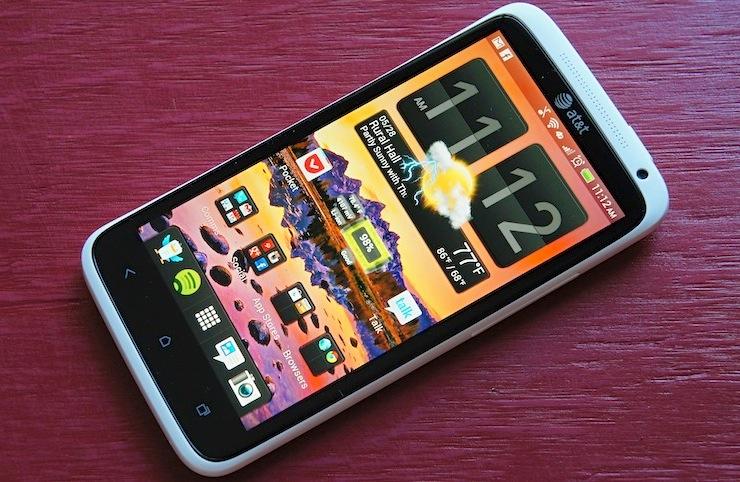
Before Apple released the iPhone 4 with the LG-made Retina Display, smartphone display pixel densities were one of the less important features of a phone. Then, it was all about processor speed, memory, storage space and camera quality. But along came an iPhone with one of the sharpest, most vibrant displays to date and made us realize just how lackluster our phones' displays really were.
Back then, I didn't care about resolution, display type, contrast, color reproduction or ... anything regarding the display really. The only feature of displays I paid any attention to was the physical size – I didn't like phones smaller than 3.8-inches. (Oh, how times have changed!) But after spending some time staring at the Retina Display, it made going back to the pixelated, 3.8-inch WVGA display on the myTouch 4G almost unbearable.
Magically, as if overnight, screen resolution and pixel density became one of the most important features in a smartphone for me, as did type and subpixel layouts.
Android manufacturers began making smartphones with 4.0- to 4.3-inch qHD displays. While the size of Android phones' displays were more to my liking, the 256 and 275 pixels per inch ratings didn't hold a candle to the 326ppi on the iPhone. Text and the corners of icons were still jagged; it was a sight for sore, pixel junkie eyes.
Then, not long after qHD displays arrived, so did 720p and WXGA (1280 by 800 pixels) displays. In short, they're gorgeous. The 4.7-inch Super LCD2 display on the HTC One X is absolutely beautiful. Near perfect, even. Even the WXGA HD Super AMOLED display on the Samsung Galaxy Note is beautiful (even though it doesn't handle whites at low brightness very well).
But they aren't stopping there.
Last night, LG Display announced their latest product: a 5.0-inch 1080p Advanced High Performance In-Plane Switching (AH-IPS) LCD display. That's right, 1080p – just as many pixels as the 40-inch television in your living room, all crammed into a 5-inch display. At 1,080 pixels tall by 1,920 pixels wide and an aspect ratio of 16:9, the display measures a staggering 440 pixels per inch (that's over 110 more pixels per inch than the iPhone 4S).
LG claims their 5-inch 1080p AH-IPS LCD display touts "wide viewing angles, fast response times and improved brightness efficiency", says Engadget's Zachary Lutz. And the panels should be ready for use in mobile devices as soon as the second-half of this year.
It's an amazing feat, no doubt. But is a 1080p mobile display really necessary?
Sure, 1080p might be nice to look at, especially if you're watching movies and consuming tons of media from your phone. But the benefits don't outweigh the downsides to the technology.
For one, file sizes of optimized applications, videos and games are going to increase quite a bit. We saw just that when Apple released the new iPad with a 9.7-inch display and a resolution of 2048 by 1536 pixels. Applications that were updated to support Retina Display graphics were up to five times the size of their predecessors. Granted, the jump from 720p to 1080p isn't quite as large as the jump from the iPad 2 display (1024 by 768 pixels) to the new iPad. But storage space will certainly become a problem.
Also, battery consumption. I've been using the HTC One X for over three weeks now as my primary device. While my results vary, others have been reporting great battery life. Nonetheless, anywhere from 50 to 75 percent of the battery drain can be contributed to the large, high density display.
The more pixels there are, the more work the GPU and processor have to do, which is fine so long as the battery can withstand the extra power consumption. Whether LG says their display has "improved brightness efficiency" or has a low power consumption rating, nothing can be said for the accompanying battery technology yet.
Currently, I am very happy with the 720p display on the HTC One X. Happier than I thought I would be. And, for the most part, I was more than happy with the 5.3-inch HD Super AMOLED display on the Galaxy Note. (Whites are atrocious, but as far as quality and density go, it was fine.) I'm afraid the visual differences in a 1080p display will be negligible, even at 5-inches, and the only differences worth noting will be shorter battery life, more strain on the chipset and a nice marketing term for manufacturers to boast.
I say save the 1080p for tablets and pray we don't see 1080p in handsets until battery life, SoCs and storage space are up to snuff. What say you, ladies and gents? Do you want 1080p displays now? Or would you rather wait for manufacturers to refine the accompanying specs to handle the additional stress?